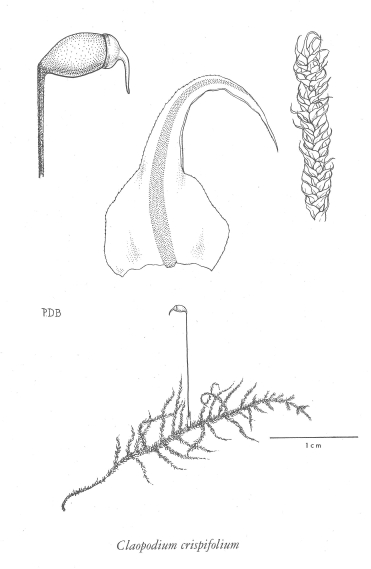E-Flora BC: Electronic Atlas of the Flora of British Columbia
Claopodium crispifolium (Hook.) Ren. & Card.
rough-moss (claopodium moss) Leskeaceae Species Account Author: Wilf Schofield Extracted from Some Common Mosses of British Columbia Introduction to the Bryophytes of BC
|
||||||||||||||
